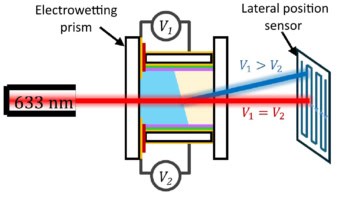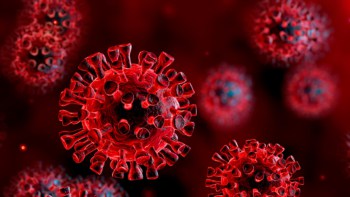Available to watch now, The Electrochemical Society, in partnership with Semilab, explores the detection of multiple pathogens in easily accessible biological samples
Want to learn more on this subject?

The COVID-19 pandemic has shed light on the global need for inexpensive, simple-to-use pathogen tests accessible to individuals on a daily basis to move beyond point-of-care diagnostics in favour of methods even more readily available to all people.
We have developed a low-cost disposable electronic sensor for use by individuals with minimal training and simple equipment for detection of multiple pathogens in easily accessible biological samples, such as saliva. The devices were fabricated using scalable processes with potential for economical mass production to utilize the sensitivity and surface chemistry of a two-dimensional MoS2 transducer for attachment of antibody fragments in a conformation favourable for antigen binding. Ultra-thin layers (3 nm) of amorphous MoS2 were directly sputtered over the entire sensor chip at room temperature and laser annealed to create an array of semiconducting 2H-MoS2 active sensor regions between metal contacts.
The semiconducting region was functionalized with monoclonal antibody Fab (fragment antigen binding) fragments derived from whole antibodies complementary to either SARS-CoV-2 S1 spike protein or Influenza A hemagglutinin. The high affinity of the antibody fragment base for the MoS2 transducer surface with some density of sulfur vacancies promoted antibody fragment chemisorption with antigen binding regions oriented for interaction with the sample. Electrical resistance measurements of sensors functionalized with antibody fragments and exposed to antigen concentrations ranging from 2–20,000 picograms per millilitre revealed selective responses in the presence of complementary antigens comparable to gold-standard diagnostics such as PCR analysis.
Want to learn more on this subject?
 Christopher Muratore is the Ohio Research Scholars Endowed Chair Professor in the Chemical and Materials Engineering Department at the University of Dayton, Ohio. Prior to joining the university, Christopher spent nine years as a staff member at the Air Force Research Laboratory and still works closely with sensor development and flexible electronics groups there. Throughout his 20-year research career, Christopher’s work has focused on developing an understanding of how to control structure and properties of surfaces and interfaces in addition to their impact on device or component performance in diverse applications. He has four patents, has published more than 90 peer-reviewed articles and has served as guest editor for Surface and Coatings Technology and Thin Solid Films over the past five years.
Christopher Muratore is the Ohio Research Scholars Endowed Chair Professor in the Chemical and Materials Engineering Department at the University of Dayton, Ohio. Prior to joining the university, Christopher spent nine years as a staff member at the Air Force Research Laboratory and still works closely with sensor development and flexible electronics groups there. Throughout his 20-year research career, Christopher’s work has focused on developing an understanding of how to control structure and properties of surfaces and interfaces in addition to their impact on device or component performance in diverse applications. He has four patents, has published more than 90 peer-reviewed articles and has served as guest editor for Surface and Coatings Technology and Thin Solid Films over the past five years.





